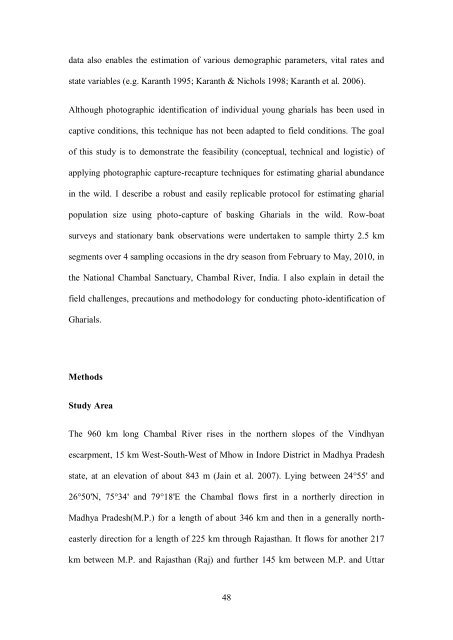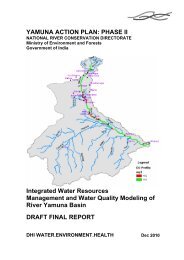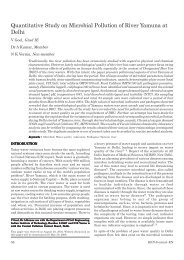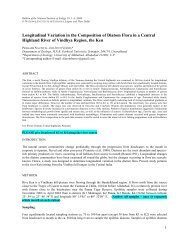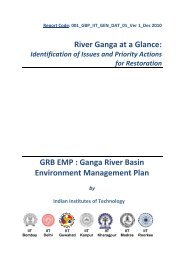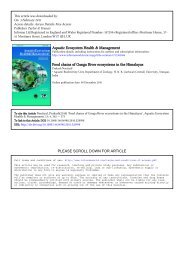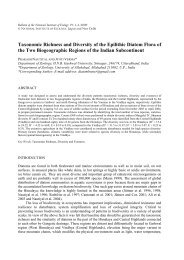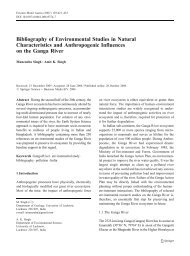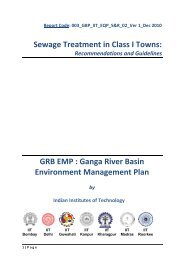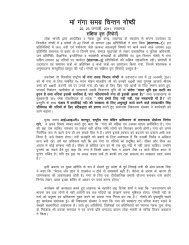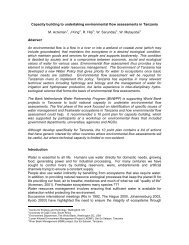Ecological and anthropogenic covariates ... - GANGAPEDIA
Ecological and anthropogenic covariates ... - GANGAPEDIA
Ecological and anthropogenic covariates ... - GANGAPEDIA
Create successful ePaper yourself
Turn your PDF publications into a flip-book with our unique Google optimized e-Paper software.
data also enables the estimation of various demographic parameters, vital rates <strong>and</strong><br />
state variables (e.g. Karanth 1995; Karanth & Nichols 1998; Karanth et al. 2006).<br />
Although photographic identification of individual young gharials has been used in<br />
captive conditions, this technique has not been adapted to field conditions. The goal<br />
of this study is to demonstrate the feasibility (conceptual, technical <strong>and</strong> logistic) of<br />
applying photographic capture-recapture techniques for estimating gharial abundance<br />
in the wild. I describe a robust <strong>and</strong> easily replicable protocol for estimating gharial<br />
population size using photo-capture of basking Gharials in the wild. Row-boat<br />
surveys <strong>and</strong> stationary bank observations were undertaken to sample thirty 2.5 km<br />
segments over 4 sampling occasions in the dry season from February to May, 2010, in<br />
the National Chambal Sanctuary, Chambal River, India. I also explain in detail the<br />
field challenges, precautions <strong>and</strong> methodology for conducting photo-identification of<br />
Gharials.<br />
Methods<br />
Study Area<br />
The 960 km long Chambal River rises in the northern slopes of the Vindhyan<br />
escarpment, 15 km West-South-West of Mhow in Indore District in Madhya Pradesh<br />
state, at an elevation of about 843 m (Jain et al. 2007). Lying between 24°55' <strong>and</strong><br />
26°50'N, 75°34' <strong>and</strong> 79°18'E the Chambal flows first in a northerly direction in<br />
Madhya Pradesh(M.P.) for a length of about 346 km <strong>and</strong> then in a generally north-<br />
easterly direction for a length of 225 km through Rajasthan. It flows for another 217<br />
km between M.P. <strong>and</strong> Rajasthan (Raj) <strong>and</strong> further 145 km between M.P. <strong>and</strong> Uttar<br />
48


